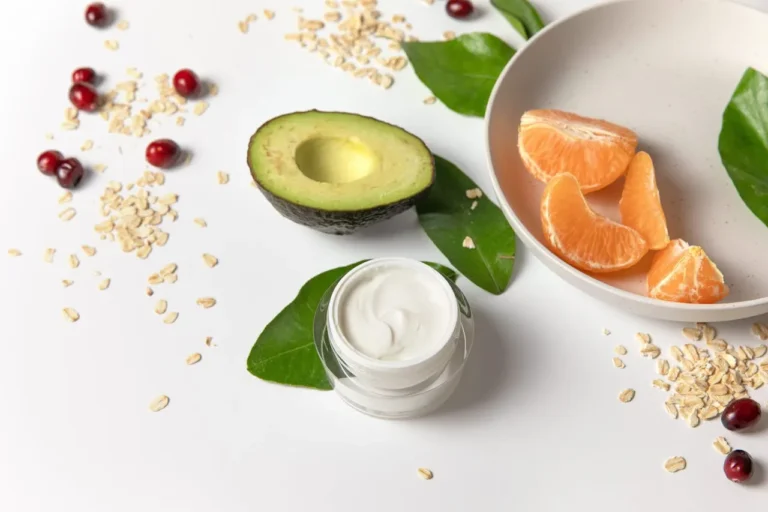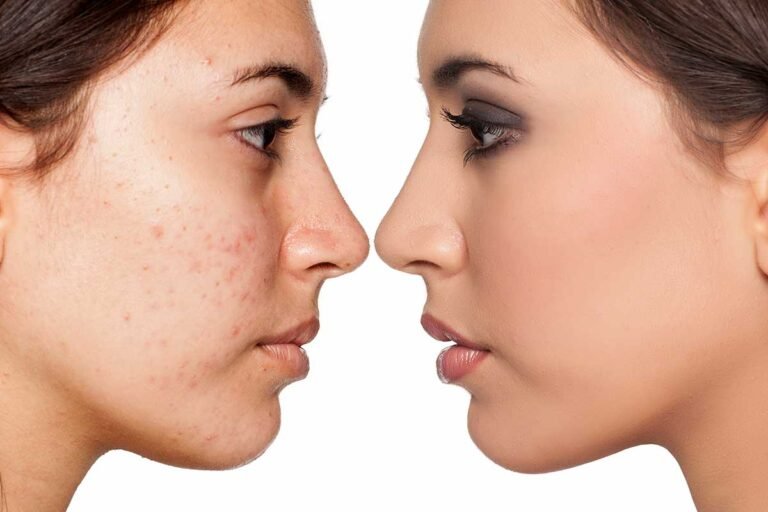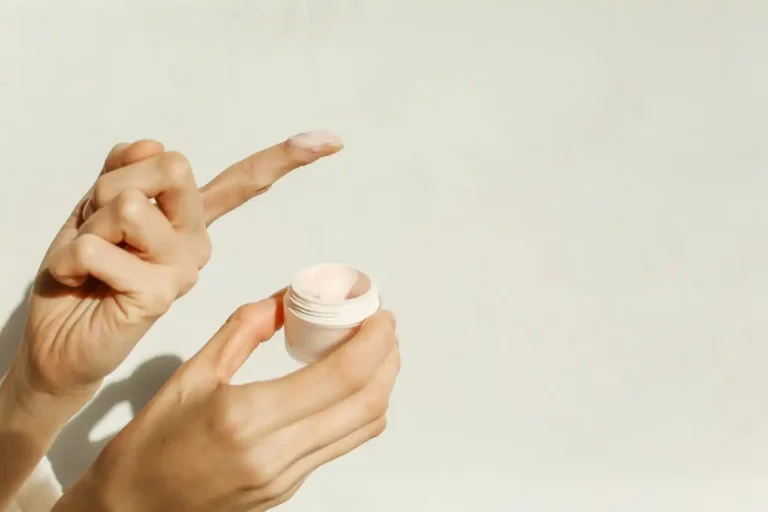The Truth About Pore Size & How to Minimize Them
You’ve probably spent countless minutes examining your face in the mirror, wondering why your pores seem so prominent. The truth is, you’re not alone in this concern.
Pores play a crucial role in your skin’s health, but understanding them can feel overwhelming. You deserve to know the facts behind pore appearance and what actually works.
Let’s dive into the science-backed methods that can help you achieve the smoother-looking skin you want. Your journey to better understanding your skin starts here.
Understanding What Pores Really Are

Your pores serve as tiny openings that allow your skin to breathe and release natural oils. These microscopic channels connect to hair follicles beneath your skin’s surface.
Every person has pores covering their entire body, though they’re most noticeable on your face.
You might notice that pores appear larger in certain areas, particularly around your nose, forehead, and cheeks.
This happens because these zones contain more sebaceous glands, which produce the natural oils your skin needs to stay healthy.
The size of your pores is largely determined by genetics. If your parents had prominent pores, you’re more likely to have them too.
However, several factors can make your existing pores appear larger or smaller than they naturally are.
Your skin type plays a significant role in pore appearance. If you have oily skin, your pores may look more prominent because they’re working overtime to produce sebum.
Conversely, dry skin types often have less visible pores due to reduced oil production.
Debunking Common Pore Myths
You’ve probably heard that pores can open and close like tiny doors. This is one of the most persistent myths in skincare.
Your pores don’t have muscles around them, so they can’t actually open or close in response to temperature changes.
When you use steam or hot water, you’re not opening your pores. Instead, you’re softening the debris and oil inside them, making extraction easier.
Cold water doesn’t shrink your pores either, though it can temporarily tighten your skin. Another common misconception is that you can permanently shrink your pore size.
While you can’t change your genetic pore size, you can significantly improve their appearance.
The right skincare routine and treatments can make your pores look smaller and less noticeable.
You might believe that harsh scrubbing will minimize your pores. This approach actually backfires by irritating your skin and potentially making pores appear larger.
Gentle, consistent care produces much better results than aggressive treatments.
Factors That Make Pores Appear Larger
Age affects your pore appearance more than you might realize. As you get older, your skin loses elasticity and collagen.
This natural aging process causes the tissue around your pores to sag, making them look larger and more prominent.
Sun damage accelerates this process significantly. UV rays break down the collagen and elastin in your skin, weakening the structure around your pores.
If you’ve spent years without proper sun protection, you might notice your pores becoming more visible over time.
Clogged pores create the illusion of larger pore size. When dead skin cells, oil, and debris accumulate in your pores, they stretch the opening.
This buildup makes your pores appear darker and more noticeable, even from a distance.
Your skincare routine can either help or harm your pore appearance. Using products that are too heavy for your skin type can clog pores and make them look larger.
Conversely, over-cleansing strips your skin of natural oils, causing it to produce more sebum and potentially enlarging pore appearance.
Hormonal fluctuations influence your pore visibility. During puberty, menstruation, or pregnancy, increased hormone levels stimulate oil production.
This extra sebum can make your pores appear more prominent during these periods.
The Science Behind Effective Pore Minimization

Salicylic acid works as your best friend for pore care. This beta-hydroxy acid penetrates deep into your pores, dissolving the oil and dead skin cells that make them appear larger.
You’ll notice clearer, less visible pores with consistent use of products containing 0.5% to 2% salicylic acid.
Regular exfoliation removes the buildup that stretches your pores. You should aim for gentle exfoliation two to three times per week, depending on your skin’s sensitivity.
This process helps maintain clear pores and prevents the accumulation that makes them look enlarged.
Retinoids offer powerful pore-refining benefits by increasing cell turnover and stimulating collagen production.
When you use retinoids consistently, they help strengthen the skin around your pores, making them appear smaller and tighter.
Start with a low concentration and gradually increase to avoid irritation.
Niacinamide has gained popularity for its pore-minimizing effects. This form of vitamin B3 helps regulate oil production and strengthens your skin barrier.
Studies show that 5% niacinamide can significantly improve pore appearance within eight weeks of regular use.
Building Your Pore-Minimizing Skincare Routine
Your morning routine should focus on protection and gentle cleansing. Start with a mild cleanser that removes overnight buildup without stripping your skin.
Follow with a niacinamide serum to control oil production throughout the day. Always apply a broad-spectrum sunscreen with at least SPF 30.
Sun protection prevents further damage to the collagen around your pores and maintains the improvements you’ve achieved through your skincare routine.
Your evening routine allows for more active treatments. Begin with a gentle cleanser, then apply your salicylic acid treatment or retinoid.
These ingredients work best when your skin isn’t exposed to sunlight, making nighttime application ideal.
You should introduce new active ingredients gradually to avoid overwhelming your skin. This approach prevents irritation that could make your pores appear more prominent.
Start by using salicylic acid or retinoids every other night, then increase frequency as your skin builds tolerance.
Weekly treatments can boost your routine’s effectiveness. Consider using a clay mask once a week to draw out impurities from your pores.
Bentonite or kaolin clay works well for most skin types and provides deep-cleaning benefits without over-drying.
Professional Treatments for Stubborn Pores
Chemical peels offer deeper exfoliation than at-home products can provide. A dermatologist can perform glycolic or salicylic acid peels that penetrate deeper layers of your skin.
These treatments help improve pore appearance by removing damaged skin and stimulating renewal.
Micro needling creates tiny channels in your skin that trigger collagen production. This process helps tighten the tissue around your pores, making them appear smaller over time.
You’ll typically need multiple sessions spaced several weeks apart for optimal results. Professional extractions remove buildup safely and effectively.
Laser treatments target pore appearance through various mechanisms. Fractional lasers stimulate collagen production, while other laser types can reduce oil production.
Your dermatologist can recommend the best laser treatment based on your specific skin concerns and type.
Professional extractions should only be performed by trained aestheticians or dermatologists.
While it’s tempting to extract blackheads and whiteheads yourself, improper technique can damage your skin and make pores appear larger.
HydraFacial treatments combine cleansing, exfoliation, and hydration in one session. This gentle procedure removes debris from your pores while infusing your skin with beneficial serums.
Many people see immediate improvement in pore appearance after a HydraFacial treatment.
Lifestyle Changes That Support Healthy Pores

Your diet influences your skin’s oil production and overall health. Focus on a balanced diet rich in omega-3 fatty acids, antioxidants, and vitamins.
Foods high in refined sugars and dairy products may increase sebum production, potentially making your pores more visible.
Hydration plays a crucial role in maintaining healthy skin function. When you’re properly hydrated, your skin maintains better elasticity and function.
Aim for at least eight glasses of water daily, and consider adding hydrating foods like cucumbers and watermelon to your diet.
Sleep affects your skin’s repair processes significantly. During deep sleep, your skin produces new collagen and repairs daily damage.
Getting seven to nine hours of quality sleep each night supports your skin’s natural healing and can improve pore appearance over time.
Stress management benefits your skin in multiple ways. Chronic stress increases cortisol levels, which can stimulate oil production and make pores appear larger.
Practice stress-reduction techniques like meditation, yoga, or regular exercise to support your skin health.
Your pillowcase and phone screen harbor bacteria that can clog your pores. Change your pillowcase at least twice weekly and clean your phone screen daily with an alcohol wipe.
These simple habits prevent bacterial buildup that could worsen pore appearance.
Ingredients to Avoid for Pore Health
Heavy, occlusive moisturizers can clog your pores if you have oily or combination skin. Look for non-comedogenic products labeled as suitable for your skin type.
Lightweight, gel-based moisturizers often work better for pore-prone skin than thick creams.
Alcohol-based toners strip your skin of natural oils, causing rebound oil production. This cycle can make your pores appear larger and more active.
Choose alcohol-free toners with beneficial ingredients like witch hazel or rose water instead.
Physical scrubs with rough particles can damage your skin and irritate your pores. Coconut oil and other heavy oils might clog your pores despite being natural.
The micro-tears these scrubs create can lead to inflammation and make pores appear more prominent. Stick to gentle chemical exfoliants for safer, more effective results.
While these oils work well for some people, they can be too rich for pore-prone skin. Test any new oil on a small area before applying it to your entire face.
Realistic Expectations and Timeline
You should expect to see initial improvements in pore appearance within four to six weeks of starting a consistent routine.
However, significant changes typically take three to six months of dedicated care. Patience and consistency are key to achieving the results you want.
Your pore size improvement will be gradual rather than dramatic. You’ll likely notice your pores looking cleaner and less prominent before you see changes in their actual size.
This progression is normal and indicates that your routine is working effectively.
Maintenance is crucial for sustained results. Once you achieve your desired pore appearance, you’ll need to continue your routine to maintain these improvements.
Stopping your skincare regimen will likely cause your pores to return to their previous appearance.
Some factors, like genetics and age, limit how much improvement you can achieve. Focus on achievable goals and celebrate the improvements you do see.
While you can significantly improve your pore appearance, you can’t change your fundamental skin structure.
When to Seek Professional Help

Persistent blackheads and whiteheads that don’t respond to at-home care warrant professional attention.
A dermatologist can provide stronger treatments and professional extractions that achieve better results than over-the-counter products.
If your pore concerns are accompanied by acne, inflammation, or unusual skin changes, schedule a dermatological consultation.
These symptoms might indicate underlying skin conditions that require professional treatment beyond basic pore care.
When over-the-counter products cause persistent irritation or don’t provide improvement after three months of consistent use, it’s time to seek professional guidance.
A dermatologist can assess your skin and recommend more effective treatment options.
Conclusion
You now have the knowledge to make informed decisions about your pore care routine.
Remember that consistency and patience will deliver the best results for your skin’s unique needs.







